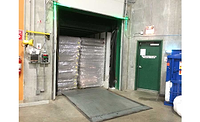|
In this article find out more about automated hygiene systems... |
Automated systems enhance hand and boot hygiene

Meritech’s CleanTech 4000S features three stations in one housing with one plumbing connection. Boot sanitizing stations can be added to this unit to provide efficient hand and boot washing at the same time. Source: Meritech.

Ecolab provides a complete hand hygiene program that includes cleaners and sanitizers, plus a range of both no-touch and manual dispensing options. Source: Ecolab.

Antibacterial hand towels can keep hands sanitary for up to 30 minutes after use and are available in three formats: roll, flat and pop up. Source: Cascades Tissue Group.

The Air Shower from Jeti GMBH uses high-speed fans and HEPA filters to sanitize workers from head to toe. Source: Jeti GMBH.




